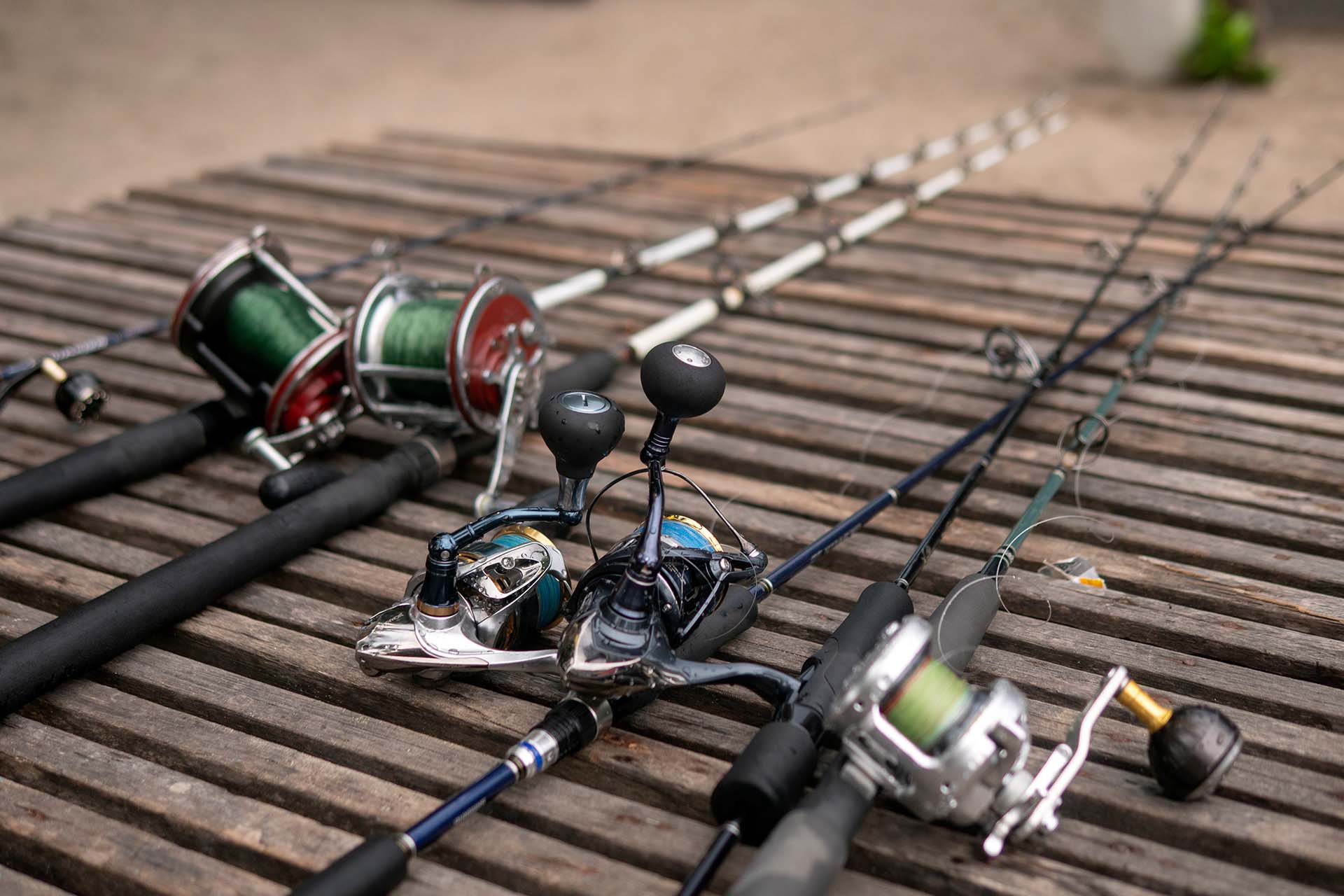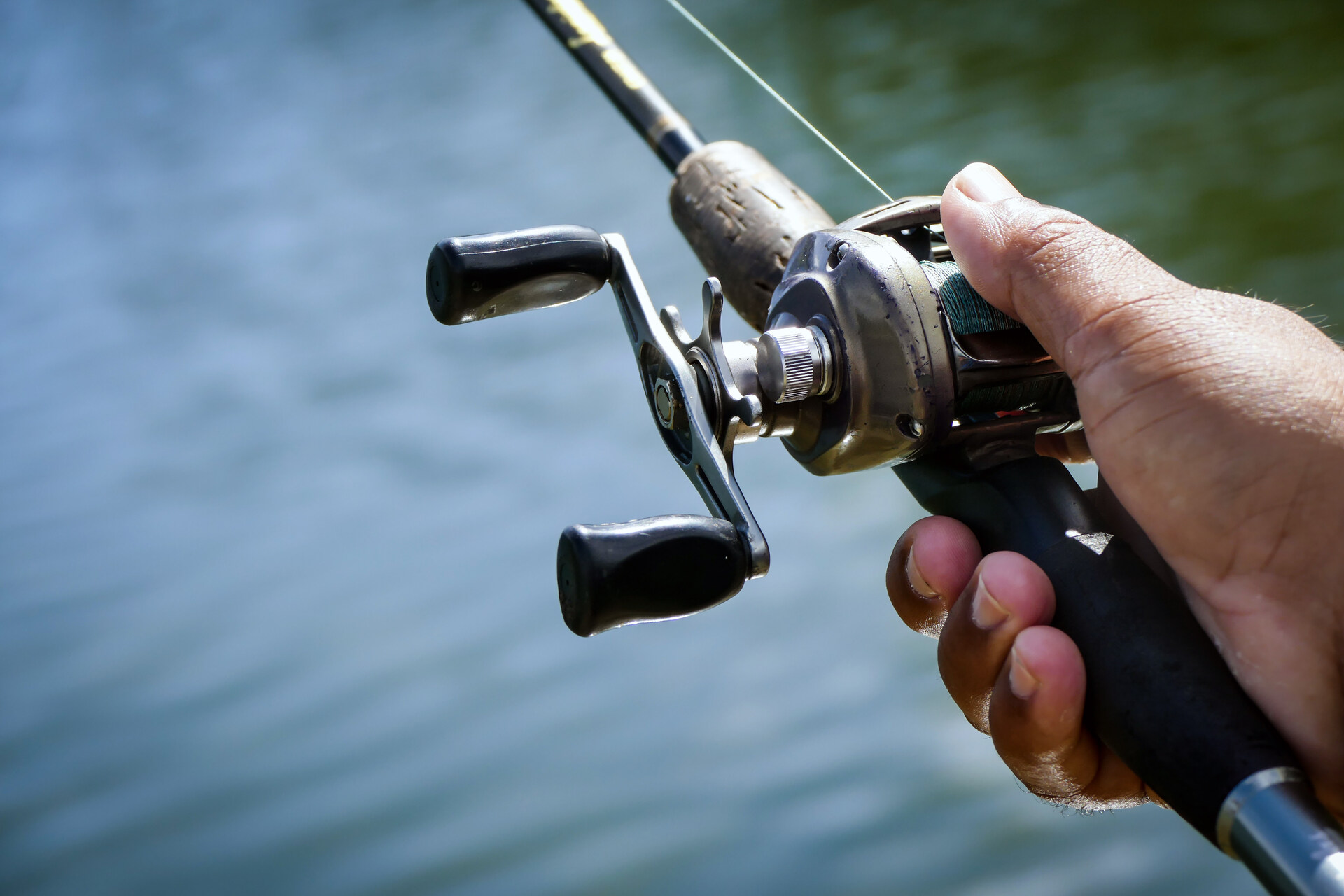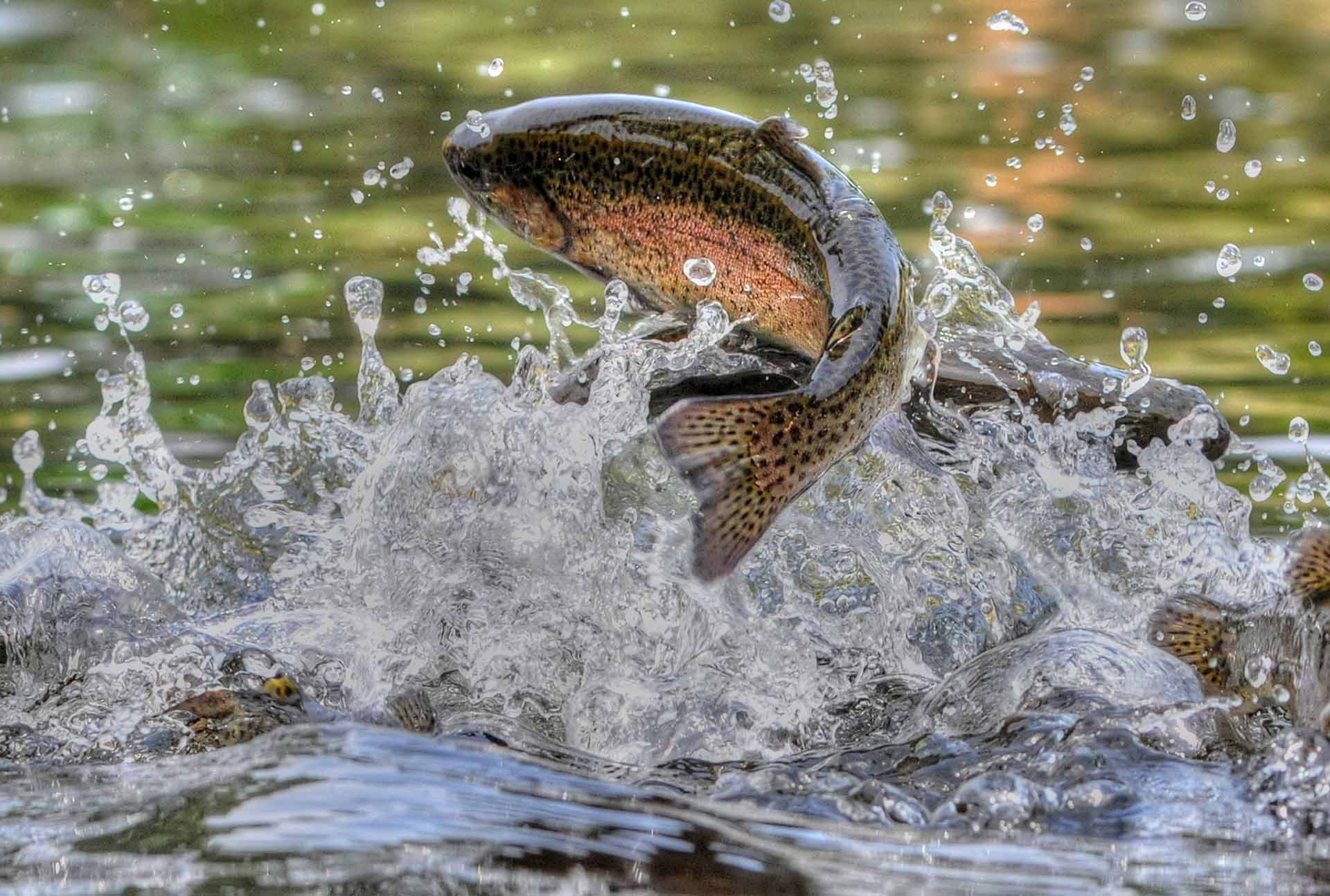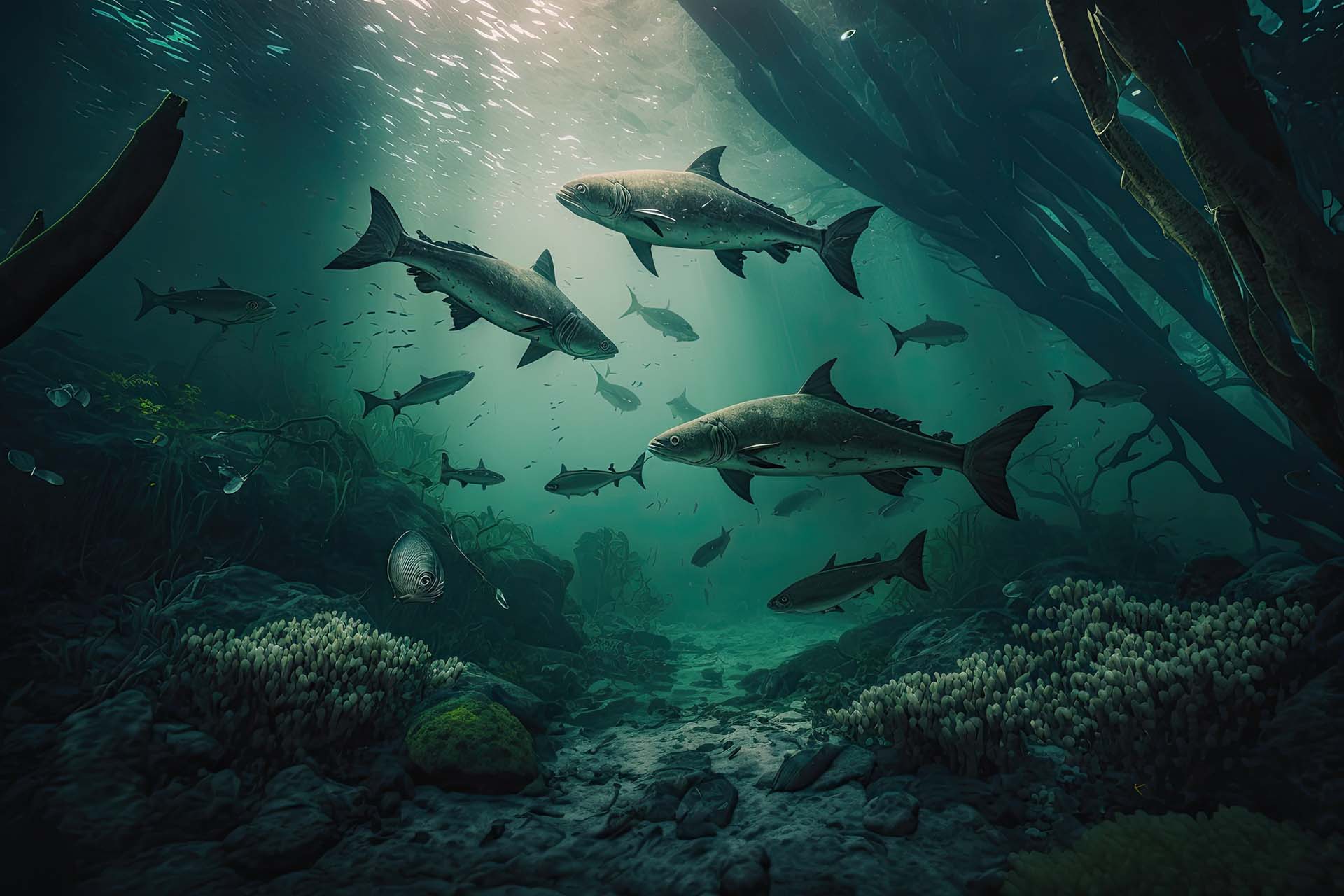Are you on the hunt for a new fishing reel but can’t make up your mind between two increasingly popular options – baitcaster vs. spinning reel? As there’s no one-size-fits-all answer, familiarizing yourself with how each type works will help you make your final choice. Let’s deep dive into these handy devices and compare them side to side, and you’ll hopefully have a clear picture of which one is best suited for your needs by the end of it.
The choice between these two types of reels ultimately depends on individual preferences and fishing style, as both have advantages and disadvantages. Baitcasters are an ideal choice for the more experienced anglers who value accuracy and power, while spinning reels are more suitable for beginners due to their user-friendly features. That’s why it’s important to consider factors like target species, skill level, and preferred techniques to find your perfect match.
Baitcaster vs. Spinning Reel – How to Make a Difference?
No matter if you’re a beginner angler or a seasoned fisherman, having the right type of reel greatly affects the overall fishing experience and success. Different fishing techniques require specific reels, and using the wrong one can lead to tangles and backlashes.
The reel’s quality also impacts the smoothness of casting and reeling in your target fish species. If it’s well-designed and equipped with proper drag settings, the device will ensure smooth line release and retrieval, increasing the chances of landing your catch.
While I’ll primarily focus on baitcaster and spinning reels here, let’s start with a quick overview of all available types of reels and their key features:
| Type | Physical Characteristics | Key Features |
|---|---|---|
| Spinning | Fixed spool beneath the rod | Suitable for beginners, smooth drag system and lightweight design |
| Baitcasting | Revolving spool on the top of the rod | Precise control and accuracy, adjustable braking system |
| Spincasting | Closed-face design | Beginner-friendly with push-button release |
| Fly | Large arbor design to accommodate fly line | Precise line control and smooth drag system |
| Trolling | Sturdy construction, often with large spool | High line capacity and drag power, built to withstand saltwater |
What Are the Main Baitcaster Reel Mechanics and Features?
Baitcaster reels utilize a revolving spool that rotates on top of the fishing rod as the fishing line is released, allowing for excellent casting distance, as well as control and accuracy. These reels are often built with durable materials and can handle heavier lines and lures, making them suitable for targeting larger aquatic creatures such as common saltwater fish.
One of the key features of this specific piece of equipment is the adjustable braking system, which helps to prevent backlash and tangles during casting. The drag systems allow anglers to control the resistance on the line when reeling in their catch, ensuring a smooth and controlled retrieval. Baitcasters also typically offer high gear ratios, allowing for quick line retrieval.
What Are the Main Spinning Reel Mechanics and Features?
Spinning reels are widely popular due to their versatility and user-friendly design, making them an excellent choice for beginners. They feature a fixed spool beneath the fishing rod, and the line is released in a controlled manner as the spool rotates. These reels also typically have a smooth drag system that helps in fighting and landing fish.
One of the key features of spinning reels is the bail system, which allows for easy casting by flipping the bail open and closing it to secure the line. This design makes them suitable for various fishing styles, including casting lightweight lures and live bait. Moreover, they’re often lighter in weight compared to other types, providing anglers with comfort during long sessions out on the water.

Pros and Cons of Baitcaster Reels
As mentioned, baitcasters offer excellent control and accuracy, no matter the casting distance. But like every other piece of angling gear, it has its advantages and disadvantages, and it requires a bit of research to fully understand if it’s the right choice for you.
Advantages of Using a Baitcaster Reel
Here’s what sets baitcasters apart from the rest:
- Precise casting control – allows anglers to place their bait or lure with pinpoint precision,
- Increased casting distance – known for their ability to achieve longer casting distances compared to other types, making them ideal for covering larger areas of water,
- Handling heavier lines and lures – this makes them suitable for targeting larger fish species or fishing in heavier covers,
- Versatile for various fishing techniques – including flipping, pitching, and casting,
- Quick line retrieval – typically equipped with high gear ratios, which enables faster line retrieval, giving you an advantage when reeling in fish or making quick follow-up casts,
- Durability and ruggedness – typically built with sturdy construction and durable materials, allowing them to withstand the rigors of challenging fishing conditions,
- Fine-tuned drag system – offers precise drag adjustments, enabling you to set the right amount of resistance for battling fish effectively,
- Sensitive bite detection – the direct connection with the fishing rod provides enhanced sensitivity, allowing anglers to detect subtle bites and make swift hooksets.
Disadvantages of Using a Baitcaster Reel
As you can clearly see, baitcasters offer numerous benefits. However, they do come with a few disadvantages you should take into account. One of their main drawbacks is the steeper learning curve, meaning they require more practice and skill to properly cast and avoid backlash, which can be especially frustrating for beginners.
Additionally, these reels tend to have a higher initial cost compared to other types, making them a more significant investment. There’s also the fact that they excel with heavier lines and lures but may not perform as well when it comes to delicate presentations. One thing’s for sure – you won’t be bringing a baitcaster to your fly fishing session anytime soon.

Pros and Cons of Spinning Reels
When it comes to spinning reels, the situation is more or less the same – this type also has its own set of advantages and disadvantages. Getting familiar with both sides of the coin will help you understand if they’re the right fit for you or if you need to continue your search for the most efficient fishing setup.
Advantages of Using a Spinning Reel
Here’s what a high-quality spinning reel such as the Okuma Ceymar or the Daiwa BG brings to the table:
- Versatility – suitable for various fishing techniques, including freshwater and light saltwater fishing,
- User-friendly option – known for their user-friendly design, they’re an excellent choice for beginners,
- Easy casting – offers easy casting with minimal chance of backlash or tangles, making them accessible to anglers of all skill levels,
- Quick line release – provides quick and smooth line release, allowing for efficient casting and retrieval,
- Lightweight – typically lighter in weight compared to other reel types, providing anglers with comfort during extended fishing sessions,
- Less line twist – has a reduced tendency for line twist, allowing for more hassle-free fishing experiences,
- Versatile line capacity – accommodates a wide range of line types and sizes, making the adaptable to different fishing situations,
- Suitable for finesse fishing – ideal for finesse techniques such as nymph fishing, allowing for delicate presentations and precise lure control.
Disadvantages of Using a Spinning Reel
Like baitcasters, spinning reels have their fair share of disadvantages you need to take into consideration. First and foremost, one of their main drawbacks is the limited casting distance and accuracy compared to other types. While versatile, they may not perform on the same level for long-distance or pinpoint accuracy casting.
Moreover, these reels tend to have lower line capacity, which can limit their compatibility with heavy lines and suitability for targeting larger fish species. Another potential drawback is the increased likelihood of line tangling and wind knots, especially when using lightweight lures or fishing in windy conditions. However, with proper technique and maintenance, these issues can be minimized.

Factors to Consider When Choosing Between Baitcaster and Spinning Reel
When choosing any piece of fishing equipment, it’s crucial to do plenty of research. If possible, try out both types and see which one feels better in your hands. You can even seek advice from the more experienced fishermen and pick up some fishing slang on the way.
Here are the most important aspects you need to think about when deciding which type is the better option for you:
Skill Level and Experience
Baitcasters require a higher level of skill and more practice to master due to their learning curve and potential for backlash, so they’re better suited for the more experienced anglers who can handle the challenge.
On the other hand, spinning reels are more beginner-friendly and suitable for anglers with less experience, as they offer a simpler casting mechanism and are forgiving when it comes to controlling the line. So, if you’re a novice or still developing your skills, starting with this type allows you to build confidence and gradually transition to baitcasters and other reels as your skills improve.
Fishing Style and Target Species
Considering your preferred fishing style and target species is crucial, as these reels are better suited for different scenarios. If your fishing technique involves heavy lures, casting in dense cover, or requiring precise bait placement, a baitcaster is definitely the better option.
However, if you want a versatile device that is particularly well-suited for finesse fishing, lightweight lures, and targeting smaller or medium-sized fish, a spinning reel is probably the best choice for you.
Budget for Fishing Gear
Budget is an important factor to consider, as there might be a significant difference in price. While both types are available in a wide price range, baitcasters tend to have a higher initial cost due to their advanced mechanics and features, so it’s not a good option if you’re going the cost-effective route.
Spinning Reel vs. Baitcaster – How to Choose the Right Reel for You
Ultimately, selecting the right reel comes down to finding a balance between your fishing style, comfort level, and the specific features and advantages each type has to offer. So, think about the fishing techniques you enjoy, the usual size of your catch, and the level of control and finesse you envision for your fishing trips. Following your specific requirements will surely put you on the right track to finding your perfect match.
Baitcaster Reel vs. Spinning Reel – Only You Can Make the Final
At the end of the day, it all boils down to personal preference. Each fishing experience is unique, and choosing the right type of reel goes beyond saying one is better than the other. Regardless of which one you end up choosing, just make sure to keep up with routine maintenance, and you’ll be landing impressive catches for years to come.
More To Explore

When Is Trout Season? Your Essential Guide to Timing the Perfect Catch
Maya Brown / April 25,2024
Read More »
Best Fishing Boats for Small Lakes – Top Picks for Every Angler
Maya Brown / April 22,2024
Read More »




